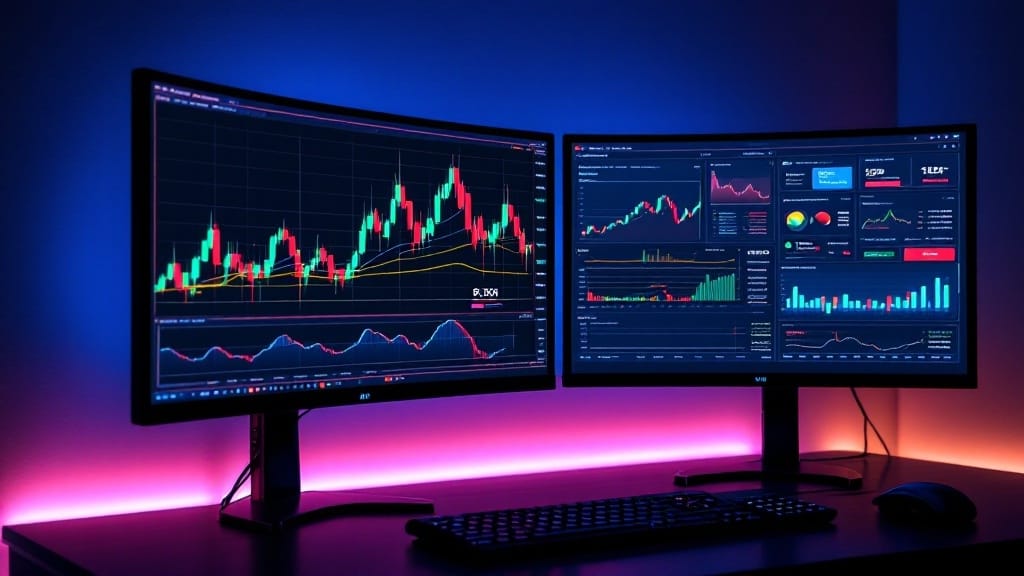Backtesting crypto trading strategies involves analyzing historical market data to validate investment approaches before deploying actual capital. Traders must gather reliable price data, define precise entry and exit rules, and incorporate position sizing parameters while considering both bull and bear market conditions. The process includes manual or automated testing methods, evaluation of key metrics like win rate and maximum drawdown, and continuous strategy refinement. Understanding these fundamentals establishes a foundation for developing more sophisticated trading systems.

Every successful cryptocurrency trader relies on a well-structured trading strategy to navigate the volatile digital asset markets. Backtesting serves as an essential tool for traders to validate their strategies using historical data, allowing them to assess potential performance before risking real capital. Through systematic analysis of past market behavior, traders can identify patterns, refine entry and exit points, and optimize their risk management parameters.
Backtesting empowers traders to validate strategies and manage risk through historical analysis before committing real capital to volatile cryptocurrency markets.
The process begins with gathering extensive historical price data from reliable sources, guaranteeing accuracy across multiple timeframes and market conditions. Traders must clearly define their strategy parameters, including specific technical indicators like Moving Averages, RSI, or MACD, along with precise entry and exit rules that can be objectively tested. The incorporation of position sizing and risk management rules, such as stop-loss levels and maximum drawdown limits, forms an integral part of the backtesting framework. Support and resistance levels are crucial technical indicators that should be incorporated into any comprehensive backtesting strategy. Popular platforms like TradingView and Cryptohopper offer automated tools to streamline the backtesting process. Similar to how cryptographic puzzles secure cryptocurrency networks, backtesting helps secure trading strategies by validating their effectiveness.
Traders can choose between manual and automated backtesting methods, with automated systems offering advantages in speed and elimination of human bias. Manual backtesting, while time-consuming, allows traders to develop a deeper understanding of market dynamics and their strategy's behavior. The testing period should span diverse market conditions, including both bull and bear markets, to guarantee strategy robustness.
Statistical analysis of backtesting results provides significant metrics such as win rate, average profit per trade, and maximum drawdown. These metrics help traders evaluate their strategy's effectiveness and make necessary adjustments to improve performance. Common optimization techniques include adjusting indicator parameters, fine-tuning entry/exit rules, and modifying position sizing algorithms.
However, traders must remain aware of inherent limitations in backtesting, such as survivorship bias and the inability to account for future market conditions perfectly. A strategy showing strong historical performance requires forward testing in real-time market conditions before implementation with actual capital.
Regular strategy review and adjustment guarantee continued effectiveness as market conditions evolve, making backtesting an ongoing process rather than a one-time exercise.
FAQs
How Long Should My Backtesting Period Be for Reliable Crypto Trading Results?
For reliable crypto trading backtesting, a minimum period of 12-24 months is recommended, encompassing numerous market cycles and conditions.
This timeframe allows strategies to be tested across bull and bear markets, high and low volatility periods, and different economic events.
Importantly, cryptocurrency markets exhibit unique characteristics, requiring longer testing periods to capture their inherent volatility and rapid market shifts effectively.
Can I Backtest Multiple Cryptocurrencies Simultaneously Using the Same Strategy?
Yes, multiple cryptocurrencies can be simultaneously backtested using platforms like Kryll.io that offer multi-currency backtesting features.
This approach provides thorough performance analysis across different crypto pairs while maintaining consistent strategy parameters.
The process, typically costing around $0.05 per backtest, runs efficiently in the background and generates comparative analysis reports, enabling traders to identify which currencies respond best to their chosen strategy.
What Percentage of Winning Trades Indicates a Successful Backtesting Strategy?
A successful backtesting strategy typically demonstrates a win rate of 50-70%, though the percentage alone doesn't guarantee profitability.
The strategy's general success depends on the risk-reward ratio, with lower win rates being acceptable if winners considerably outweigh losses.
For example, a 40% win rate could be profitable if winning trades generate 3x the losses of unsuccessful ones.
Should I Include Exchange Fees and Slippage in My Backtesting Calculations?
Including exchange fees and slippage in backtesting calculations is crucial for accurate performance assessment.
Transaction costs, including maker/taker fees, can greatly impact profitability, while slippage, which occurs during order execution, can reduce returns by 1-3% per trade.
A thorough backtest must incorporate these real-world factors to avoid overestimating strategy performance and provide reliable results for live trading implementation.
How Often Should I Reoptimize My Trading Strategy Based on Backtesting Results?
Reoptimization frequency depends on several key factors: market volatility, strategy complexity, and trading timeframe.
Short-term strategies typically require monthly reoptimization, while longer-term approaches may need quarterly updates.
High market volatility or significant market structure changes warrant immediate reoptimization.
A systematic approach involves monitoring strategy performance metrics, including Sharpe ratio and maximum drawdown, triggering reoptimization when these metrics decline beyond predetermined thresholds.









